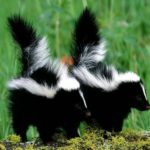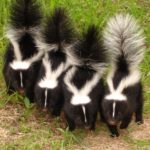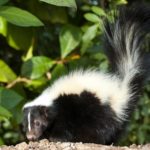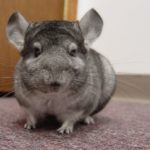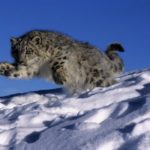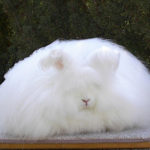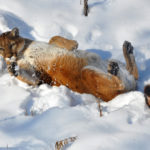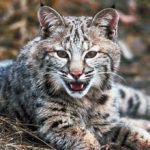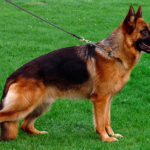Skunks – information
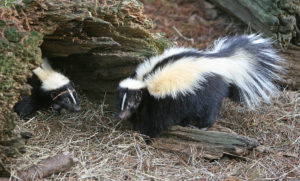 Strangely enough, but the stench of skunks did not become an obstacle to their economic use. In the XIX – first half of the XX century, these animals were the object of fur trade. A bit harsh, but the long and smart fur skunks went on padding the coat, it was also used in a painted form. At one time the demand for such raw materials was so great that these mammals were even tried to acclimatize to other continents and successfully bred on farms. Skunks turned out to be very friendly, easy-to-adjust and complaisant animals, but in order to avoid accidents, the anal glands of the slaves were nevertheless removed. Now the fashion for skunk fur comes back again, but it is used only for tailoring of model clothes. Another product obtained from these animals, the so-called “skunk butter”. This is the fat secret of the glands located on the back of the animal, it almost has no smell. Indians and the first settlers of America used it as a therapeutic balm and warming ointment.
Strangely enough, but the stench of skunks did not become an obstacle to their economic use. In the XIX – first half of the XX century, these animals were the object of fur trade. A bit harsh, but the long and smart fur skunks went on padding the coat, it was also used in a painted form. At one time the demand for such raw materials was so great that these mammals were even tried to acclimatize to other continents and successfully bred on farms. Skunks turned out to be very friendly, easy-to-adjust and complaisant animals, but in order to avoid accidents, the anal glands of the slaves were nevertheless removed. Now the fashion for skunk fur comes back again, but it is used only for tailoring of model clothes. Another product obtained from these animals, the so-called “skunk butter”. This is the fat secret of the glands located on the back of the animal, it almost has no smell. Indians and the first settlers of America used it as a therapeutic balm and warming ointment.
Sometimes skunks are kept as pets, some of them are known as heroes of Hollywood movies. However, recently in many countries to contain skunks in homes has become illegal. On the one hand, this is done because of the threat of spreading rabies, on the other hand, a humanitarian ban on the removal of anal glands has come into effect. Skunks are not rare in nature, therefore they are not included in the number of protected species.
To warn a potential aggressor that he was in for trouble, the skunk got a bright, well-marked fur. In the forest, he wanders without hiding, but for greater reliability he often raises his tail to be seen from afar. If the stranger approaches, the skunk recalls its presence, stomping its paws. This signal can be translated as “Be attentive, here I am!”. Experienced predators such a hint is enough to leave the territory. But young animals, the first time in the life of seeing a skunk, it can not stop. If they try to attack, the animal takes a fighting posture: makes an acrobatic stance on the front paws, hitting the back of the trunk high, and makes a precise “shot.” At a distance of 1-3 m, the jet falls precisely into the predator, and when it hits the eyes directly, the fluid causes temporary blindness.
But even in case of a miss, the stench in the radius of 5-10 m is simply intolerable, but in general, the smell can be felt at a distance of up to 1 km! According to eyewitnesses, in the skunk jet you can simultaneously catch notes of burnt rubber, decaying corpse, rotten egg and rotten onions. For particularly stubborn enemies, the skunk can repeat the lesson by making 5-6 “shots” in a row. The chemical weapons of these animals are so effective that a predator who has ever undergone such an attack remembers an unpleasant experience for life and never dares to attack a skunk. But in the world there is nothing ideal, therefore even such weapons have their own flaw. The fact is that the skunk needs about 10 days to make up the stores of mercaptan in iron, during this period it remains defenseless.
For the sake of justice, it is worth noting that the force of the unpleasant smell of a skunk is often exaggerated. Rumors that it is possible to lose consciousness from the stench of the animal and even die, do not correspond to reality. They are lying and asserting that a clothes or car stained with a spray can not be cleaned and have to be thrown away. Although the smell of mercaptan is very sturdy and not removed with conventional detergents, it can be washed with a freshly prepared mixture of soda, liquid soap and 3% hydrogen peroxide. Less effective means, allowing only to reduce its strength, are solutions of vinegar and tomato paste, as well as special anti-skunk sprays. After their use, clothes will have a few more days to air.
